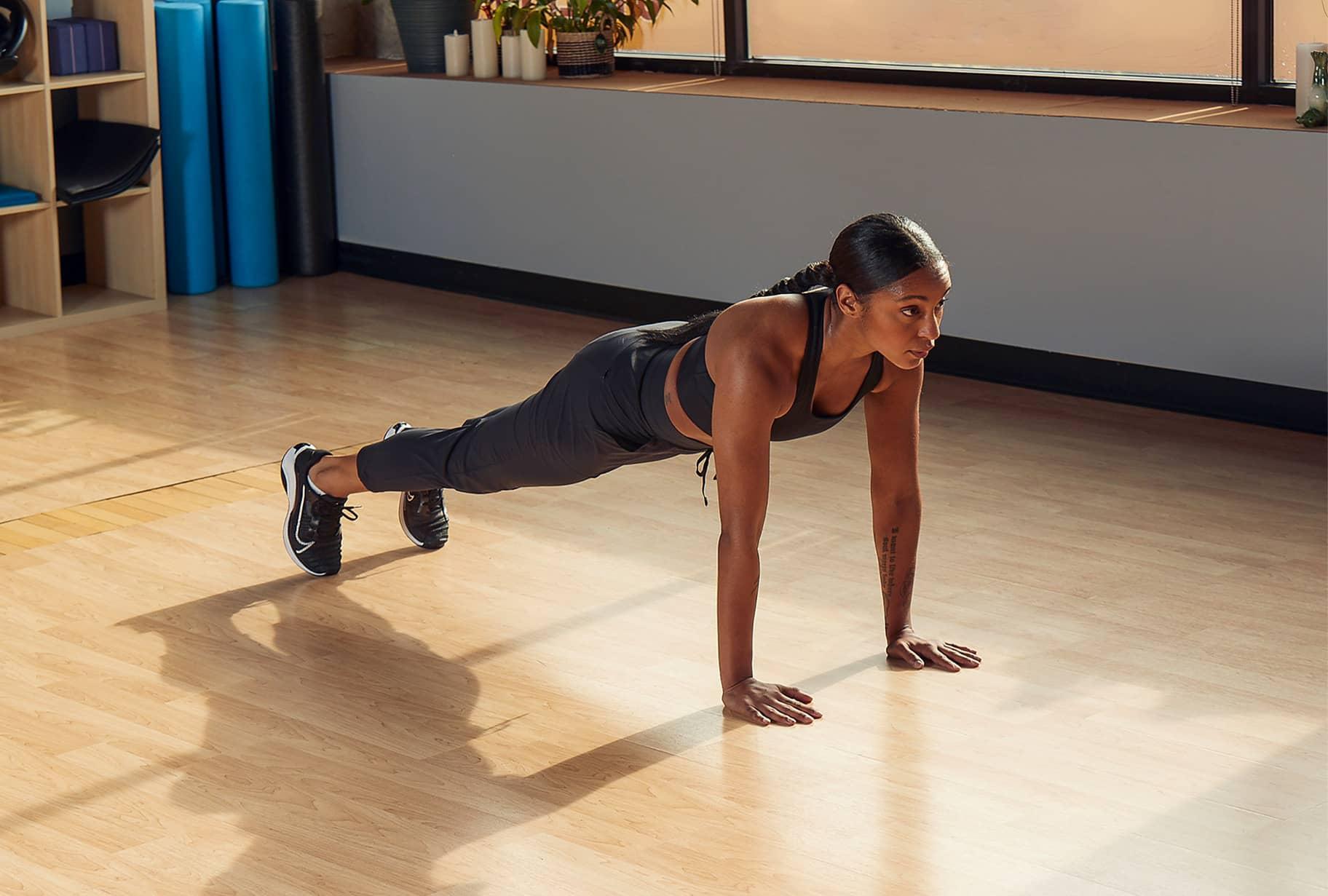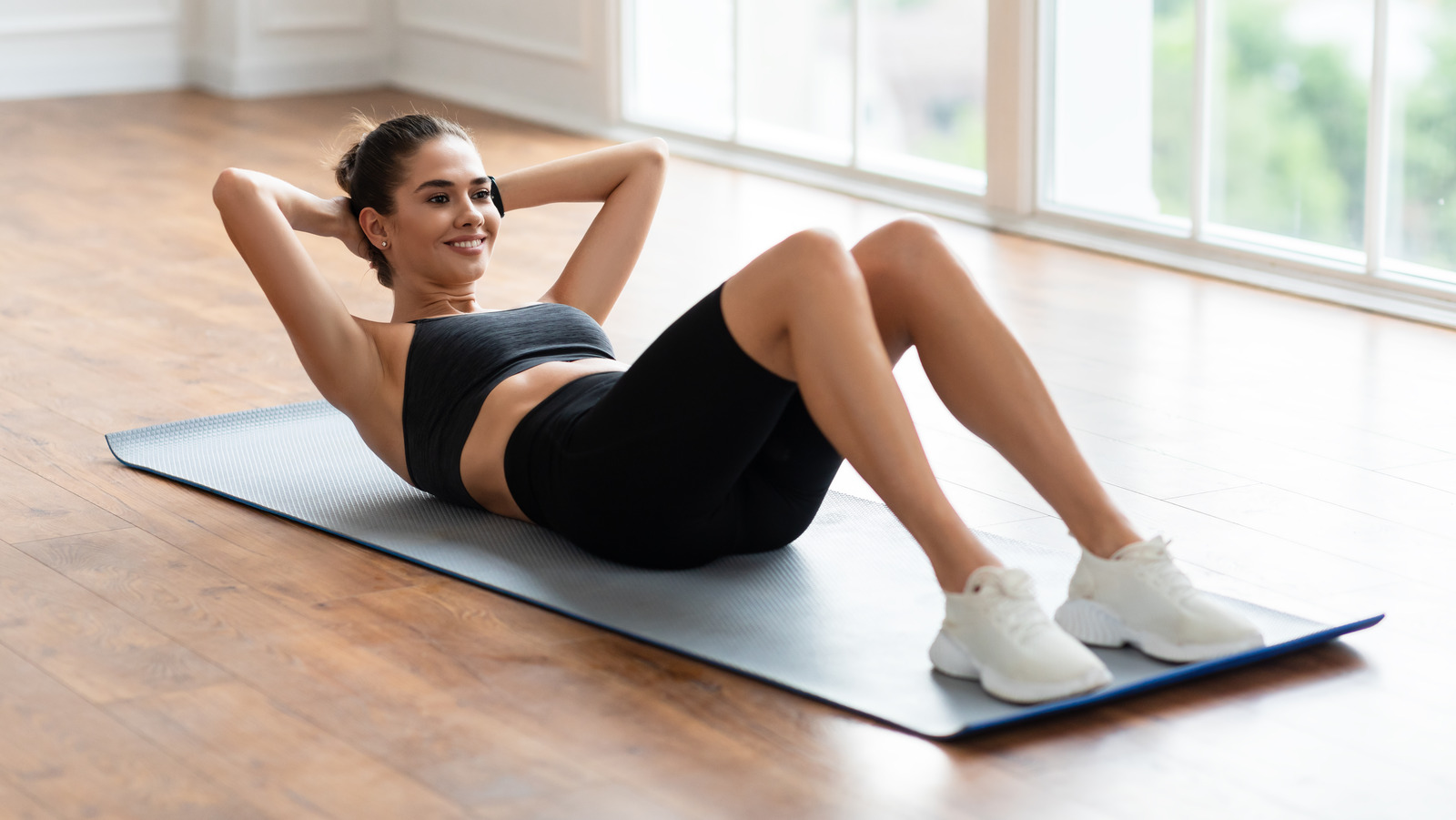When it comes to strengthening the core and achieving that desired toned midsection, two exercises stand out: the plank vs crunches. These exercises have been popular choices among fitness enthusiasts, but which one is more effective? In this article, we will delve into the details of each exercise, explore their benefits and drawbacks, and finally, provide you with a comparative analysis to help you determine the most suitable exercise for your fitness goals.
Understanding the Plank Exercise

The plank vs crunches is a static exercise that involves maintaining a position similar to a push-up, with arms extended and supporting the body’s weight on the toes. It primarily targets the abdominal muscles, but also engages the back, shoulders, and glutes. The isometric nature of the plank helps build core strength by contracting and stabilizing the muscles without repetitive movements. Exercise Mat Provide a comfortable and supportive surface for your plank and other floor exercises. This mat offers cushioning and grip, ensuring a stable workout area.
Benefits of Plank Exercise
Plank vs crunches offer a plethora of benefits beyond just core strength. They improve posture, enhance balance, and contribute to a stronger lower back. Moreover, planks engage multiple muscle groups simultaneously, promoting overall body stability. The exercise is also low-impact, making it suitable for individuals of various fitness levels and ages.
Proper Plank Vs Crunches Form and Variations

To maximize the effectiveness of planks and avoid injury, it is crucial to maintain proper form. Keep your body in a straight line, engage the core muscles, and avoid sagging or arching your back. As you progress, you can incorporate variations like side planks, forearm planks, or plank vs crunches with leg lifts, challenging your core from different angles. Ab Carver Pro Roller Strengthen your core further with this ab roller. It engages your abdominal muscles and adds a dynamic component to your routine, complementing the static plank.
The Effectiveness of Crunches
Crunches are dynamic exercises that involve repeatedly flexing the spine and targeting specific abdominal muscles. While they have been a go-to exercise for sculpting the abs, their effectiveness has been debated in recent years. Crunches mainly work the rectus abdominis, but they may not engage other core muscles as effectively.
Advantages and Disadvantages of Crunches

One of the advantages of crunches is that they are easy to perform and require no equipment. They can help define the abdominal muscles and improve your overall core endurance. However, crunches have limitations, such as the potential strain they put on the neck and spine, especially when done incorrectly or excessively. Incorporate weighted planks to intensify your core training. These dumbbells are adjustable and come with a convenient stand for easy storage.
Correct Crunch Technique and Variations
When doing crunches, avoid pulling on your neck and instead focus on lifting your shoulders off the ground using your abdominal muscles. There are variations like bicycle crunches, reverse crunches, and vertical leg crunches, which can add variety to your workout routine and target different parts of the abs.
Plank Vs Crunches: A Comparative Analysis

Now, let’s compare the plank vs crunches exercises to determine which one is more effective for your fitness journey. TRX PRO3 Suspension Trainer Kit Take your plank to the next level by introducing suspension training.
Muscle Engagement: Plank vs crunches engage multiple muscles, including the rectus abdominis, transverse abdominis, and obliques, providing a more comprehensive core workout. Crunches primarily focus on the rectus abdominis and may neglect other important core muscles.
Injury Risk: Planks are generally considered safer for the spine and neck, as they do not involve repetitive spinal flexion. On the other hand, improper form and excessive repetition of crunches can lead to strain and discomfort in the neck and back.
Time Efficiency: Planks can be held for longer durations, allowing for increased core activation. Crunches may require more repetitions to achieve similar muscle engagement.
Functional Fitness: Planks mimic functional movements, like stabilizing the core during daily activities. This makes them beneficial for overall functional fitness. Crunches may not directly translate to functional movements.
Factors to Consider when Choosing
The choice between planks and crunches depends on your fitness goals, physical condition, and preferences. If you aim for overall core strength, stability, and injury prevention, planks are an excellent choice. On the other hand, if you specifically want to target the rectus abdominis and prefer dynamic movements, crunches might be suitable.
Engaging Core Muscles with Plank and Crunches

To achieve optimal results, consider incorporating both plank vs crunches exercises in your workout routine. Combining these two exercises will engage various core muscles and provide a more well-rounded approach to core training. Yoga Block Elevate your hands or feet during plank exercises using yoga blocks. This simple accessory can help you maintain proper form and adjust the intensity of your workout.
Incorporating Both Exercises in Your Workout
To get the best of both worlds, try alternating between plank variations and different types of crunches in your training sessions. For example, you can perform planks on one day and crunches on another. This approach allows you to challenge your core from different angles and avoid overworking specific muscle groups.
Conclusion
In conclusion, both planks and crunches have their merits, but when it comes to overall effectiveness and safety, the plank vs crunches exercise takes the lead. Planks offer a full-core workout, promote better posture, and reduce the risk of injury compared to traditional crunches. Nevertheless, incorporating both exercises in your routine can provide you with a well-balanced and more effective core training program. Remember to focus on proper form, stay consistent, and listen to your body as you embark on your fitness journey.
FAQs about Plank vs Crunch:
Can I do planks and crunches every day?
While daily plank practice is generally safe, it’s advisable to alternate between planks and crunches to prevent overuse injuries and promote balanced muscle development.
How long should I hold a plank?
Aim for 20 to 60 seconds initially and gradually increase the duration as your core strength improves. Quality of form is more important than duration.
Are planks or crunches better for losing belly fat?
Neither exercise directly targets fat loss. Incorporating a balanced diet and cardiovascular exercises alongside planks and crunches can contribute to overall fat loss, revealing your toned core.
Can I do planks and crunches if I have a back condition?
Planks are generally considered safer for individuals with back conditions. Consult a healthcare professional before attempting crunches, and focus on proper form and comfort.
Which exercise is better for beginners?
A: Planks can be more beginner-friendly as they engage multiple muscle groups without requiring repetitive spinal flexion. Start with modified planks and progress gradually.
Q: Can I replace planks or crunches with other core exercises?
A: Absolutely! There’s a wide variety of core exercises to choose from, such as leg raises, Russian twists, and mountain climbers. Mix and match exercises for a well-rounded core routine.



